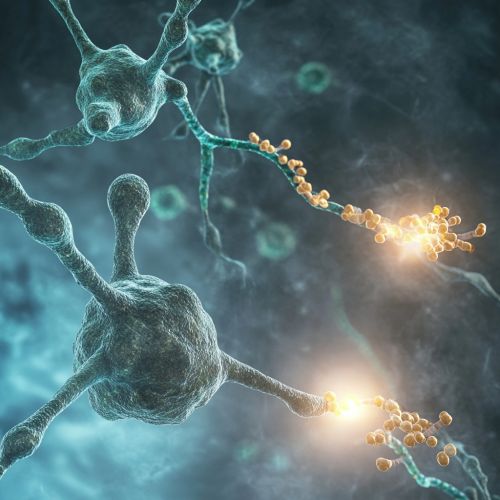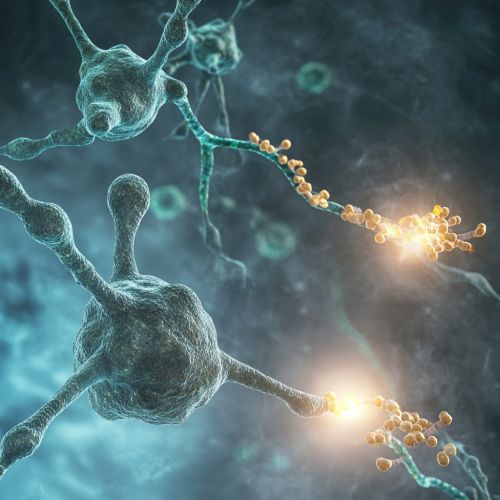Neurotransmitters and Their Role in Mood Regulation
Introduction
Neurotransmitters are endogenous chemicals that facilitate communication between neurons and other cells in the body. They play a crucial role in various physiological processes, including mood regulation. Understanding the intricate mechanisms of neurotransmitters and their impact on mood is essential for comprehending mental health disorders and developing effective treatments.
Types of Neurotransmitters
Neurotransmitters can be broadly classified into several categories based on their chemical structure and function. The primary classes include amino acids, monoamines, peptides, and others.
Amino Acids
Amino acid neurotransmitters are the most abundant in the central nervous system. They include:
- **Glutamate**: The principal excitatory neurotransmitter in the brain, glutamate is involved in cognitive functions such as learning and memory. Excessive glutamate activity can lead to excitotoxicity, which is implicated in neurodegenerative diseases.
- **Gamma-Aminobutyric Acid (GABA)**: The main inhibitory neurotransmitter, GABA reduces neuronal excitability throughout the nervous system. It plays a key role in regulating anxiety and muscle tone.
Monoamines
Monoamines are neurotransmitters derived from aromatic amino acids and include:
- **Serotonin (5-HT)**: Synthesized from tryptophan, serotonin is involved in regulating mood, appetite, and sleep. Imbalances in serotonin levels are linked to depression and anxiety disorders.
- **Dopamine**: This neurotransmitter is crucial for reward, motivation, and motor control. Dysregulation of dopamine pathways is associated with conditions such as Parkinson's disease and schizophrenia.
- **Norepinephrine (Noradrenaline)**: Involved in the body's fight-or-flight response, norepinephrine also plays a role in attention and arousal. Abnormal levels are connected to mood disorders like depression and bipolar disorder.
Peptides
Peptide neurotransmitters consist of short chains of amino acids and include:
- **Endorphins**: These are natural painkillers produced by the body. They also contribute to feelings of euphoria and well-being.
- **Substance P**: Involved in the transmission of pain signals, substance P is also linked to inflammatory processes.
Other Neurotransmitters
Other notable neurotransmitters include:
- **Acetylcholine**: Essential for muscle activation and involved in attention and memory. Acetylcholine deficits are observed in Alzheimer's disease.
- **Histamine**: Plays a role in the immune response and regulates sleep-wake cycles.
Mechanisms of Action
Neurotransmitters exert their effects by binding to specific receptors on the surface of target cells. These receptors can be classified into two main types: ionotropic and metabotropic.
Ionotropic Receptors
Ionotropic receptors are ligand-gated ion channels that open in response to neurotransmitter binding, allowing ions to flow across the cell membrane. This rapid response can either excite or inhibit the target neuron, depending on the type of ion that enters or exits the cell.
Metabotropic Receptors
Metabotropic receptors are G protein-coupled receptors that initiate a cascade of intracellular events upon neurotransmitter binding. These events can modulate ion channel activity, alter enzyme activity, or change gene expression. Metabotropic receptors typically produce slower but more prolonged effects compared to ionotropic receptors.
Role in Mood Regulation
Neurotransmitters are integral to the regulation of mood and emotional states. The balance and interaction of various neurotransmitters determine an individual's mood and susceptibility to mood disorders.
Serotonin and Mood
Serotonin is perhaps the most well-known neurotransmitter associated with mood regulation. It influences a wide range of psychological and physiological processes. Low levels of serotonin are commonly linked to depression, anxiety, and other mood disorders. Selective serotonin reuptake inhibitors (SSRIs) are a class of antidepressants that increase serotonin levels in the brain by inhibiting its reuptake into presynaptic neurons.
Dopamine and Reward
Dopamine is central to the brain's reward system. It is released in response to pleasurable activities and reinforces behaviors that are beneficial for survival. Dysregulation of dopamine pathways can lead to mood disorders such as depression and bipolar disorder. Additionally, dopamine imbalances are implicated in addiction and substance abuse disorders.
Norepinephrine and Stress
Norepinephrine plays a critical role in the body's response to stress. It enhances alertness and arousal, preparing the body for action. Chronic stress can lead to sustained high levels of norepinephrine, contributing to anxiety and mood disorders. Medications that modulate norepinephrine levels, such as serotonin-norepinephrine reuptake inhibitors (SNRIs), are used to treat depression and anxiety.
GABA and Anxiety
GABA is the primary inhibitory neurotransmitter in the brain, and it helps to maintain a balance between neuronal excitation and inhibition. Low levels of GABA are associated with increased anxiety and stress. Benzodiazepines, which enhance the effect of GABA, are commonly prescribed for anxiety disorders.
Glutamate and Neuroplasticity
Glutamate is essential for synaptic plasticity, the ability of synapses to strengthen or weaken over time. This plasticity is crucial for learning and memory. However, excessive glutamate activity can lead to excitotoxicity, which is harmful to neurons and is implicated in various neurodegenerative diseases. The role of glutamate in mood disorders is an area of active research, with some studies suggesting that glutamate dysregulation may contribute to depression.
Neurotransmitter Imbalances and Mood Disorders
Imbalances in neurotransmitter systems are a hallmark of many mood disorders. Understanding these imbalances is key to developing effective treatments.
Depression
Depression is characterized by persistent feelings of sadness, hopelessness, and a lack of interest or pleasure in activities. It is associated with imbalances in several neurotransmitters, including serotonin, norepinephrine, and dopamine. Antidepressant medications aim to correct these imbalances by enhancing neurotransmitter activity.
Anxiety Disorders
Anxiety disorders encompass a range of conditions characterized by excessive fear and worry. Neurotransmitter systems involved in anxiety include GABA, serotonin, and norepinephrine. Treatments often involve medications that enhance GABA activity or modulate serotonin and norepinephrine levels.
Bipolar Disorder
Bipolar disorder is marked by extreme mood swings, including episodes of mania and depression. Dopamine and norepinephrine are particularly implicated in the manic phases, while serotonin imbalances are associated with depressive episodes. Mood stabilizers and antipsychotic medications are commonly used to manage the disorder.
Schizophrenia
Schizophrenia is a complex mental disorder characterized by distorted thinking, perceptions, and emotions. Dopamine dysregulation is a key feature of schizophrenia, with both hyperactivity and hypoactivity observed in different brain regions. Antipsychotic medications primarily target dopamine receptors to alleviate symptoms.
Therapeutic Approaches
Various therapeutic approaches aim to restore neurotransmitter balance and alleviate mood disorders.
Pharmacotherapy
Pharmacotherapy involves the use of medications to modulate neurotransmitter activity. Common classes of medications include:
- **Antidepressants**: SSRIs, SNRIs, and tricyclic antidepressants (TCAs) increase the levels of serotonin, norepinephrine, and/or dopamine.
- **Anxiolytics**: Benzodiazepines and selective serotonin reuptake inhibitors (SSRIs) are used to reduce anxiety by enhancing GABA activity or modulating serotonin levels.
- **Mood Stabilizers**: Lithium and anticonvulsants are used to stabilize mood swings in bipolar disorder.
- **Antipsychotics**: These medications primarily target dopamine receptors to reduce psychotic symptoms in schizophrenia and bipolar disorder.
Psychotherapy
Psychotherapy, or talk therapy, is an effective treatment for many mood disorders. Cognitive-behavioral therapy (CBT) is particularly effective in addressing dysfunctional thought patterns and behaviors. Psychotherapy can be used alone or in combination with pharmacotherapy.
Lifestyle Modifications
Lifestyle modifications, including regular exercise, a healthy diet, and adequate sleep, can positively impact neurotransmitter levels and mood. Exercise, for example, increases the release of endorphins and other neurotransmitters that promote well-being.
Future Directions
Research into neurotransmitters and mood regulation is ongoing, with several promising areas of investigation.
Biomarkers
Identifying biomarkers for mood disorders could lead to more precise diagnoses and personalized treatments. Biomarkers may include specific neurotransmitter levels, genetic markers, or brain imaging findings.
Novel Therapeutics
The development of novel therapeutics that target specific neurotransmitter systems holds promise for more effective treatments with fewer side effects. For example, ketamine, an NMDA receptor antagonist, has shown rapid antidepressant effects in treatment-resistant depression.
Neurogenesis and Neuroplasticity
Understanding the role of neurogenesis (the formation of new neurons) and neuroplasticity in mood regulation could lead to new therapeutic approaches. Enhancing neuroplasticity may help to restore healthy brain function in individuals with mood disorders.
Conclusion
Neurotransmitters play a fundamental role in mood regulation, and imbalances in these chemical messengers are associated with various mood disorders. Advances in our understanding of neurotransmitter systems and their impact on mental health continue to inform the development of effective treatments. Ongoing research holds the promise of new insights and therapeutic options for individuals affected by mood disorders.


